Special freezing demonstration: Thawing wingless gyoza at home
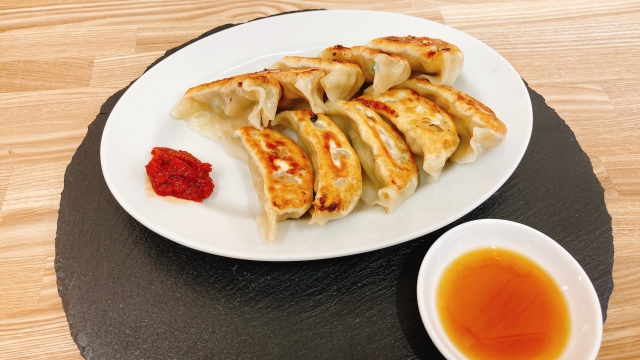
This time we will be experimenting with freezing and thawing juicy gyoza.
In this experiment, we will show you how to defrost frozen dumplings easily at home using a household heating device such as a microwave or toaster oven.
In this article, we will tell you what kind of thawing method is best in order to recreate delicious gyoza at home even after freezing and thawing.
I will tell you about it with plenty of images, so please read to the end.
The important point is the `` thawing time'' when thawing frozen gyoza.
Taking this into consideration, please take a look at the results of adjusting the heating time during defrosting.
Frozen wingless dumplings
First, set the baked gyoza in a gyoza container before freezing.
This time, I was planning to thaw it at home, so I divided it into containers and froze it.
Freeze the gyoza set in a container using an Artlock freezer.
Artlock Freezer is an air blast type freezer, so it can freeze food directly in the container.
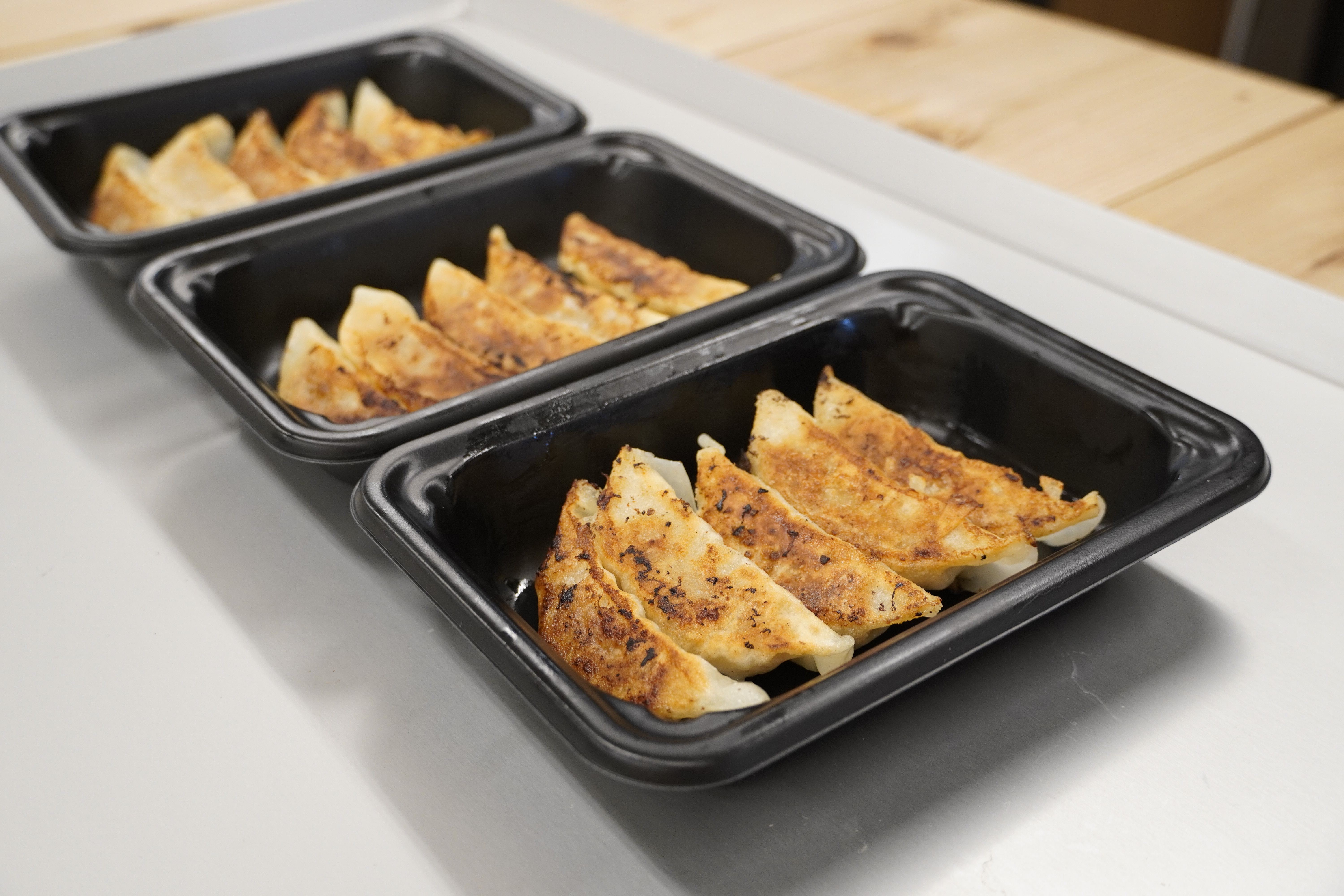
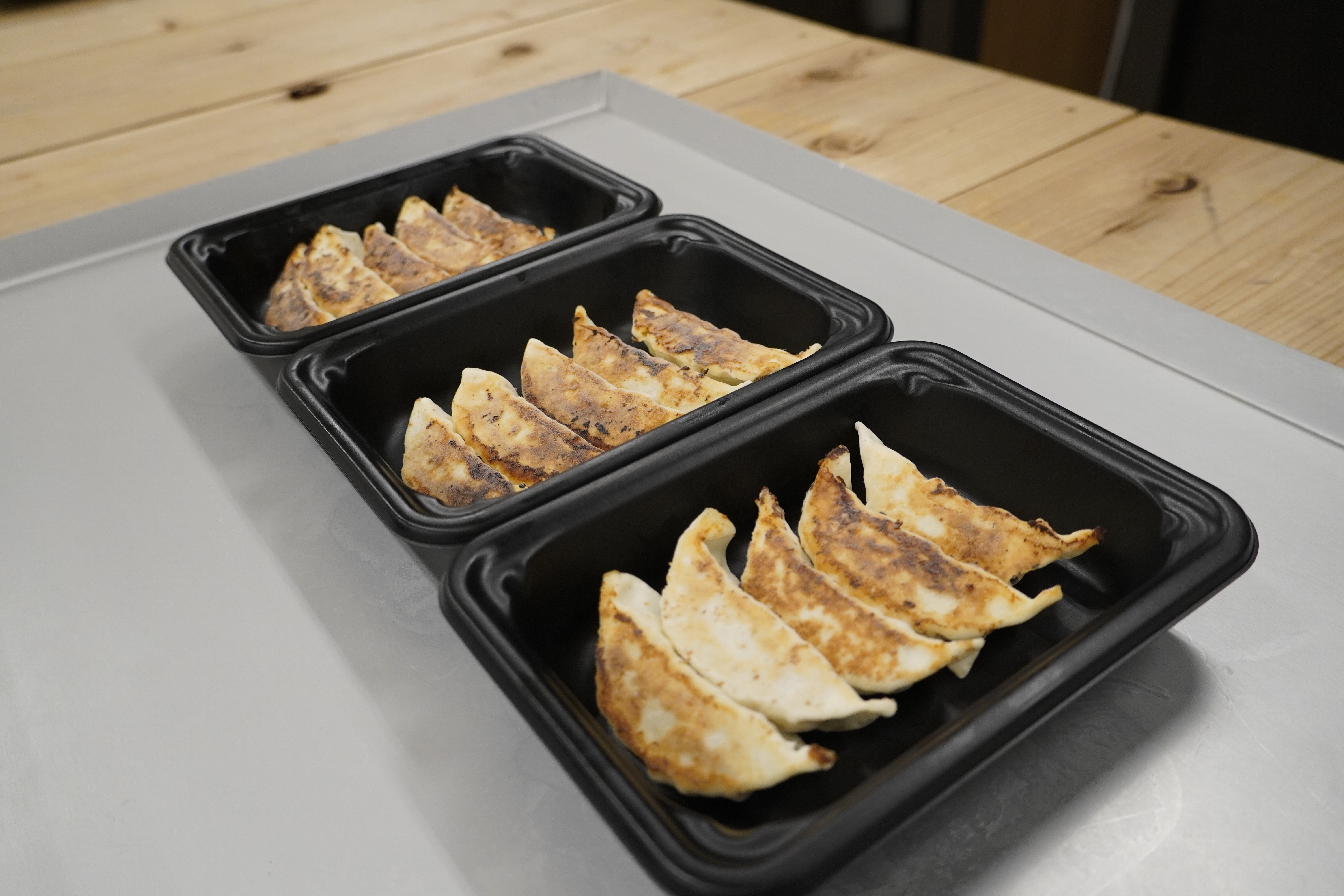
Preservation of wingless dumplings
Next, process the frozen dumplings to preserve them.
This time, I put the frozen dumplings in a packaging bag and vacuum packed them.
Vacuum packing prevents the dumplings from coming into contact with oxygen, allowing them to be stored for a longer period of time.
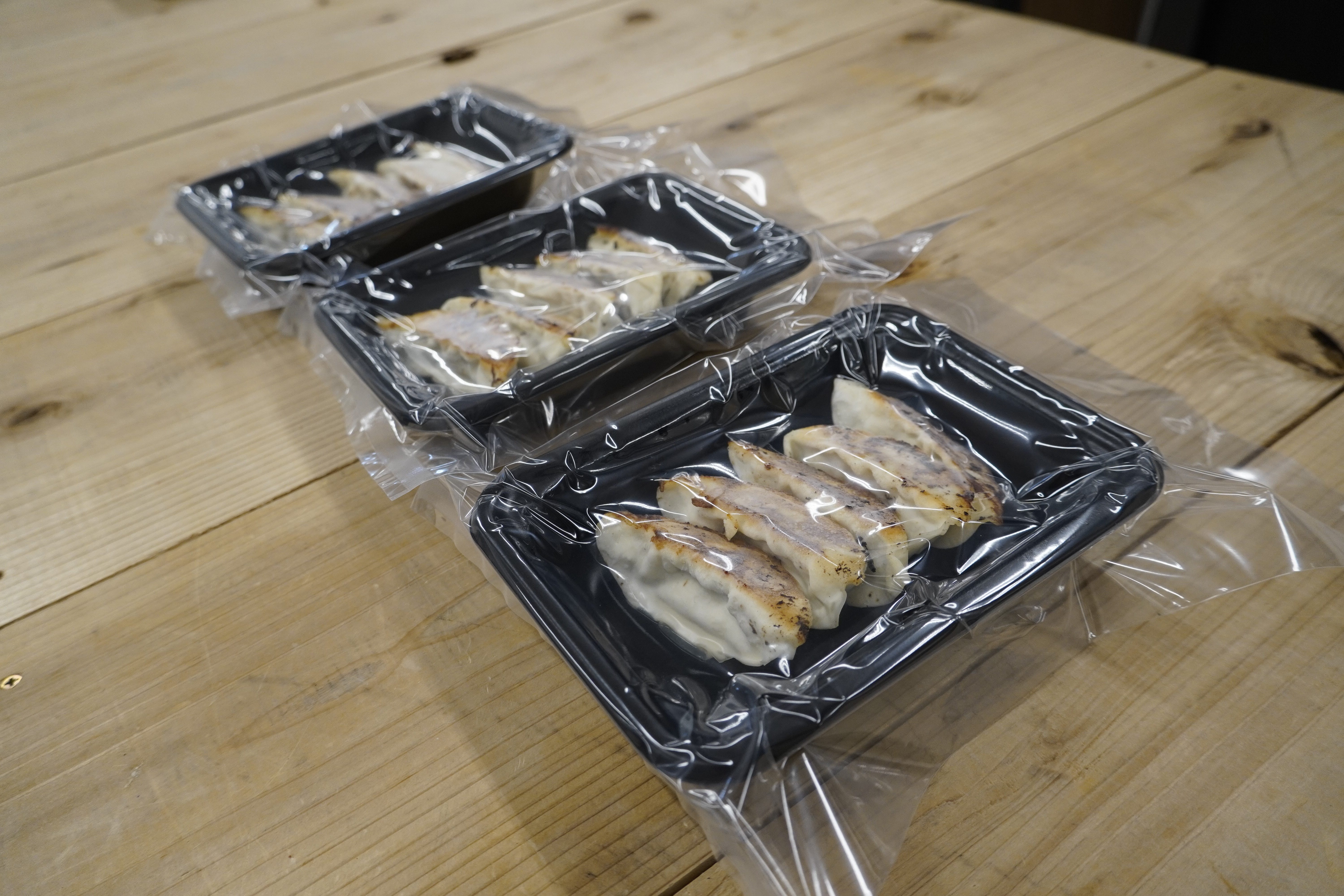
After freezing, the wrapped and vacuum-packed dumplings were stored in the freezer for about a week.
Relatively soft foods like dumplings will collapse if wrapped or vacuum packed before freezing.
On the other hand, in order to maintain higher quality, there is a dilemma of wanting to remove as much air as possible so that it does not come into contact with oxygen.
The Artlock Freezer can freeze food without wrapping it, so packaging and vacuum processing can be done after freezing.
Since frozen food is hard, there is no need to worry about the food being crushed even if you vacuum-process it by removing air more forcefully than before freezing.
As a result, the contact of food with air can be kept to a minimum, which has significant benefits in terms of both preservation quality and shelf life.
Thawing wingless gyoza
After storing for a week, it's time to thaw.
This time, we tested a method to defrost food in the microwave as deliciously as possible, assuming that you would be defrosting it at home.
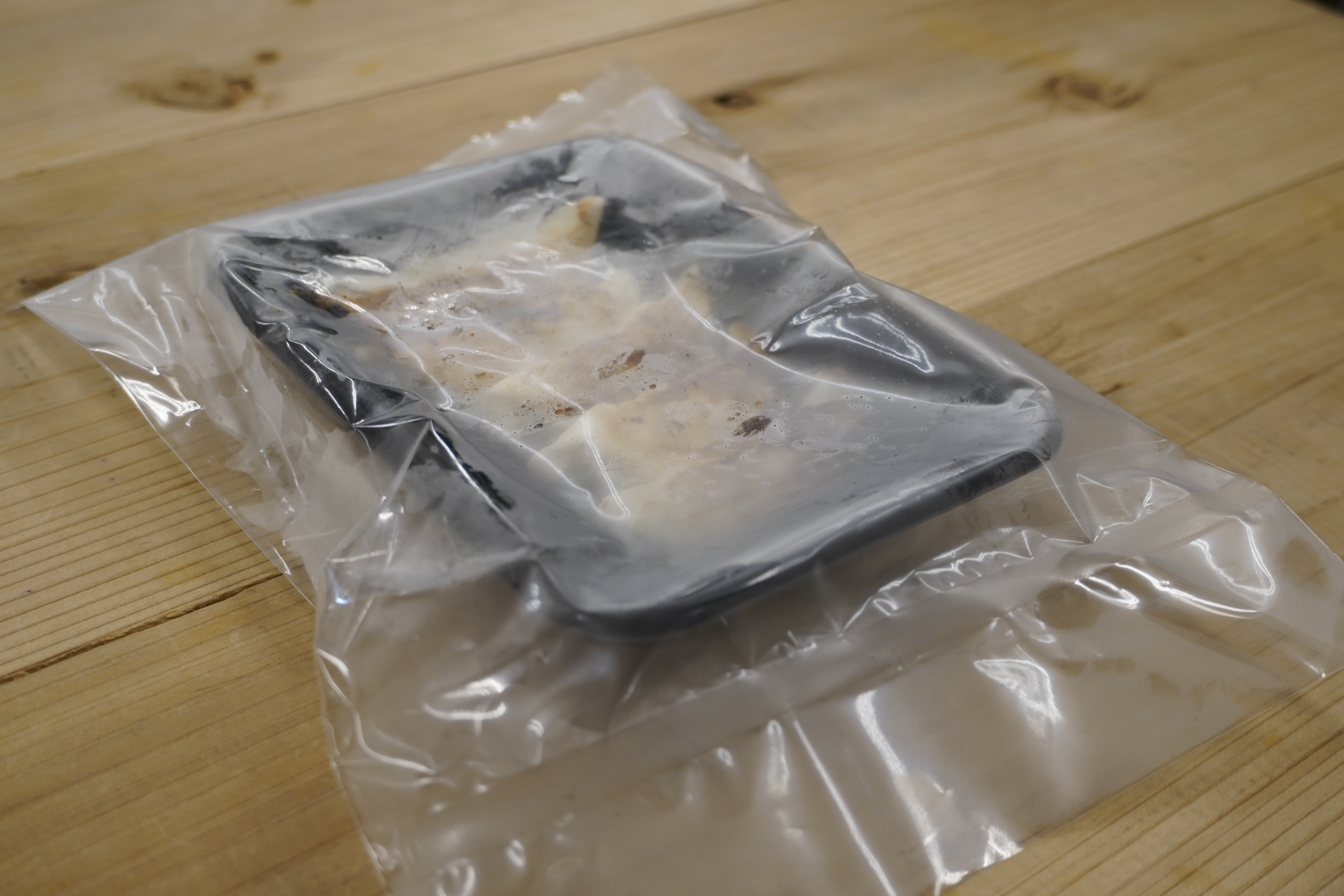
The verification conditions and results are below.
- 5 thin-skinned dumplings
- Use a 500W microwave oven
| heating time | 1 minute | 1 minute and a half | 2 minutes |
| result | cold, hard | Just right | overcooked, Oil seeping out |
In conclusion, I found that the best way to make thin-skinned gyoza is to heat them in a 500W microwave for 1.5 minutes.
When heated for 1 minute, it remained cold and hard, and when heated for 2 minutes, it became overcooked and oil oozed out.
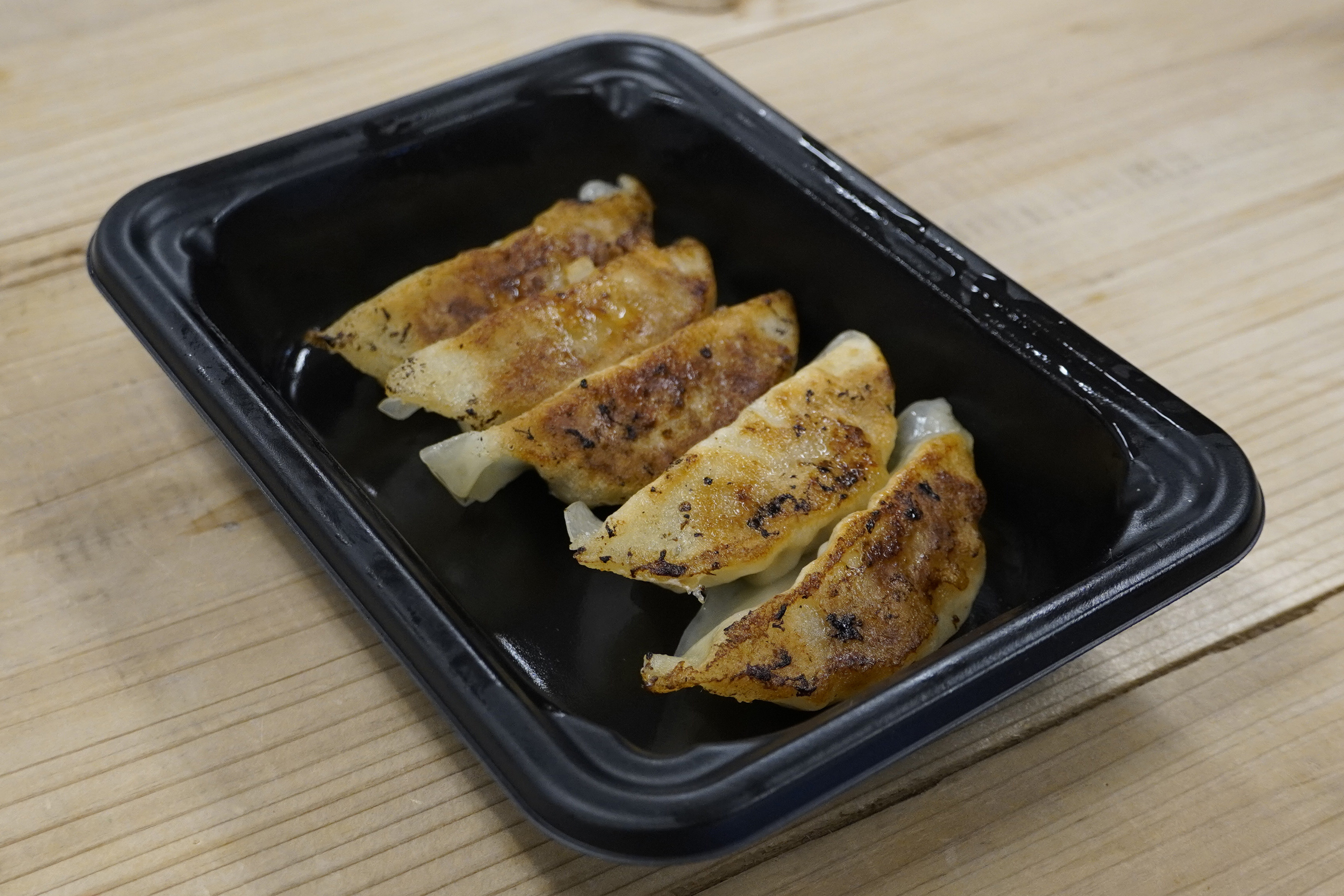
I also found that after thawing it by heating for 1 and a half minutes as described above, you can spread it with sesame oil and bake it in a toaster oven to make it crispier.
In this state, the reproducibility is about 90 points.
Conclusion
This time, we experimented with freezing gyoza and thawing them using a heating method that can be done at home.
Baked dumplings were frozen in an Artlock freezer, wrapped and vacuum packed for storage.
By vacuum-packing the dumplings after freezing, it is possible to thoroughly remove air without crushing the dumplings, which prevents contact with oxygen, improves storage quality, and extends the period during which high quality can be maintained.
Thawing was done in a 500W microwave oven, which is commonly found at home, and the optimal heating time was verified.
The optimal heating time was 1 and a half minutes; at 1 minute it was cold and hard, and at 2 minutes it was oozing oil.
After thawing, I coated it with sesame oil and baked it in a toaster oven, which made it crispy and gave me a score of about 90 points.
This time, we'll show you how to enjoy gyoza while maintaining its deliciousness even with a heater you have at home.
I think each restaurant is very particular about the gyoza wrappers and toppings. We will work with you until you are satisfied with any type of gyoza, such as the difference in chewiness due to the moisture content of the skin, and the moisture content and juiciness when biting due to the difference in the ratio of vegetables and meat in the ingredients. If you are considering freezing gyoza, please contact us!








![[Storage period increased by 30 times! ] Achieving a stable supply of raw whitebait!](https://shunkashutou.com/wp-content/uploads/2016/11/579c55e6d32e1385c250e8e7c3ed59a71.jpg)
![[Sales increased 100 times! ] rapid freezing the signature menu “Ni-katsu sandwich”!](https://shunkashutou.com/wp-content/uploads/2016/11/IMG_02391.jpg)
![[Horse sashimi] We have significantly reduced waste loss with rapid freezer!](https://shunkashutou.com/wp-content/uploads/2016/11/5fda59d0cbcdabde18e58c3c58c09ed0.jpg)




![[Storage period increased from 3 days to half a year! ] Restaurants are expanding their business using wholesale and mail order!](https://shunkashutou.com/wp-content/uploads/2018/04/66c19942ab4ba346fdb64ccc04cde373.png)
![[Reduce loss from 200 kg of oysters to zero] Improve loss and expand business with rapid freezer](https://shunkashutou.com/wp-content/uploads/2018/06/19785ca583a8d3c4041c7c192d041b0d.jpg)














![[It's good to know! ] Introducing how to freeze curry, how long to keep it frozen, and how to thaw it |](https://shunkashutou.com/wp-content/uploads/2023/08/5de5495c896622dc896a8f23d9528300.jpg)
![[Convenient for lunch boxes! ] How to freeze fried noodles and 5 different recipes](https://shunkashutou.com/wp-content/uploads/2023/10/yakisoba-768x512-1.jpg)
![[Can it be frozen?] Stew freezing method, storage period, and arrangement recipe](https://shunkashutou.com/wp-content/uploads/2023/10/f599b814ea21eef57604e4ceb2518d5b-1.jpg)
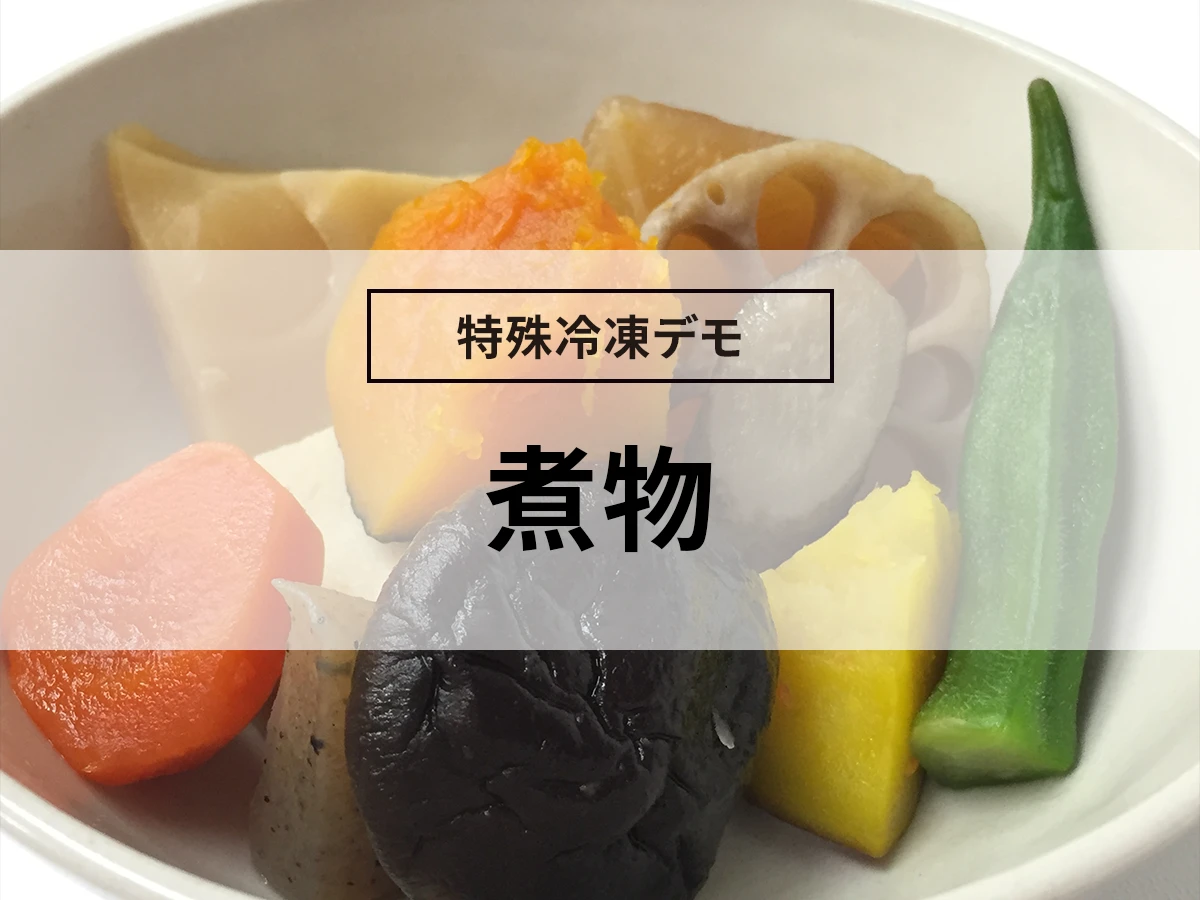

![[Freezing pickles] rapid freezing demo](https://shunkashutou.com/wp-content/uploads/2016/09/54443af8b86c85071ce9c09d80430b9a.webp)
![[Delicious, Convenient, Cheap] Recommended commercial frozen foods for restaurants to purchase](https://shunkashutou.com/wp-content/uploads/2023/07/business-frozen-food-1024x682-1.jpg)

![[Be good at saving money! ] Introducing the method and recipe for freezing fried rice](https://shunkashutou.com/wp-content/uploads/2023/10/mayo-tyahan-1024x768-1.jpg)
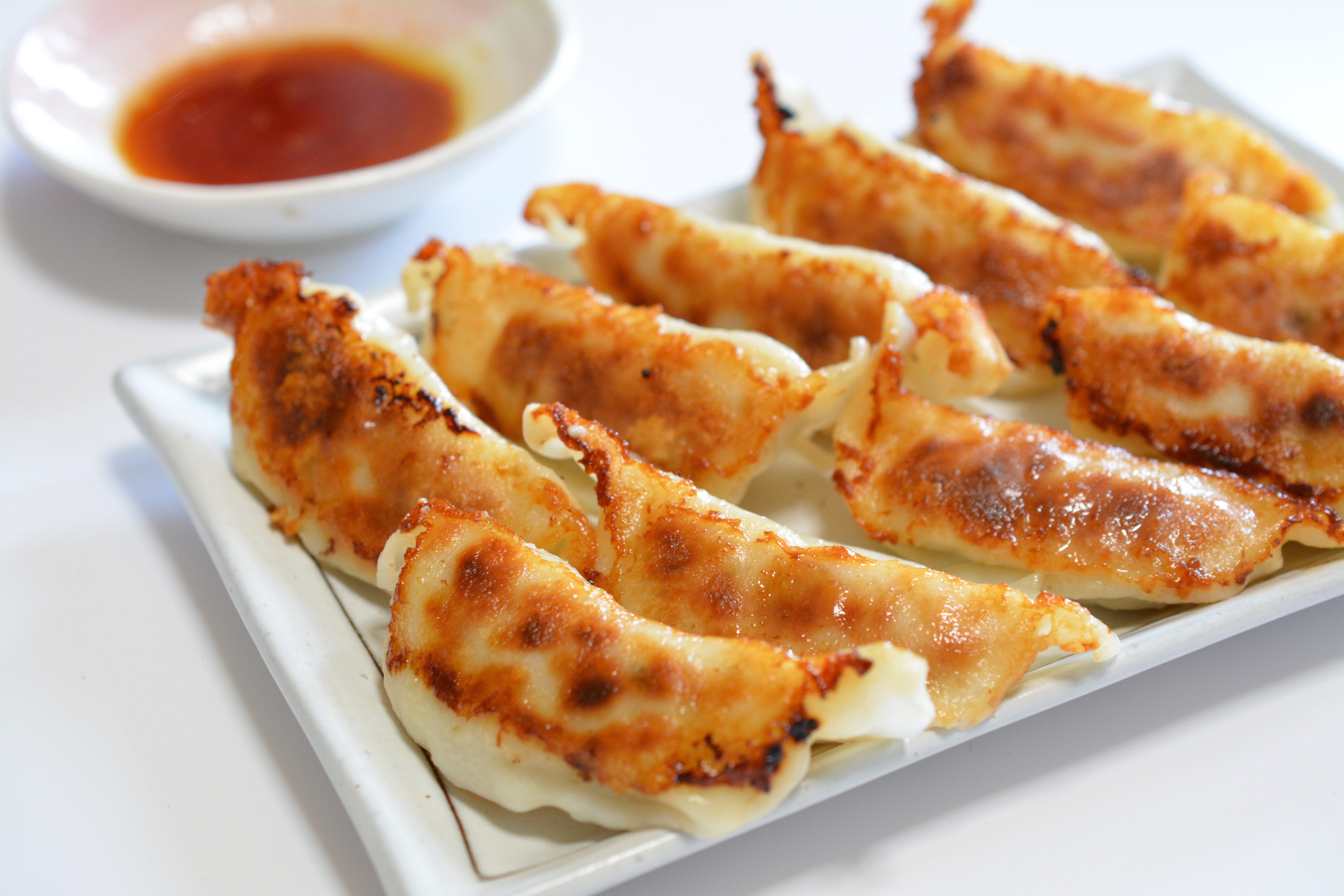
![[Freezing Ramen] rapid freezing demo](https://shunkashutou.com/wp-content/uploads/2017/04/5bd196dffb982354d8f83114a5f7bdf2.webp)
![[Must-see for beginners] What's so great about rapid freezers? Easy-to-understand explanation of the mechanism and benefits!](https://shunkashutou.com/wp-content/uploads/2020/12/9abf7961bd75c2a2af6fb61767b4fdb1-1.webp)
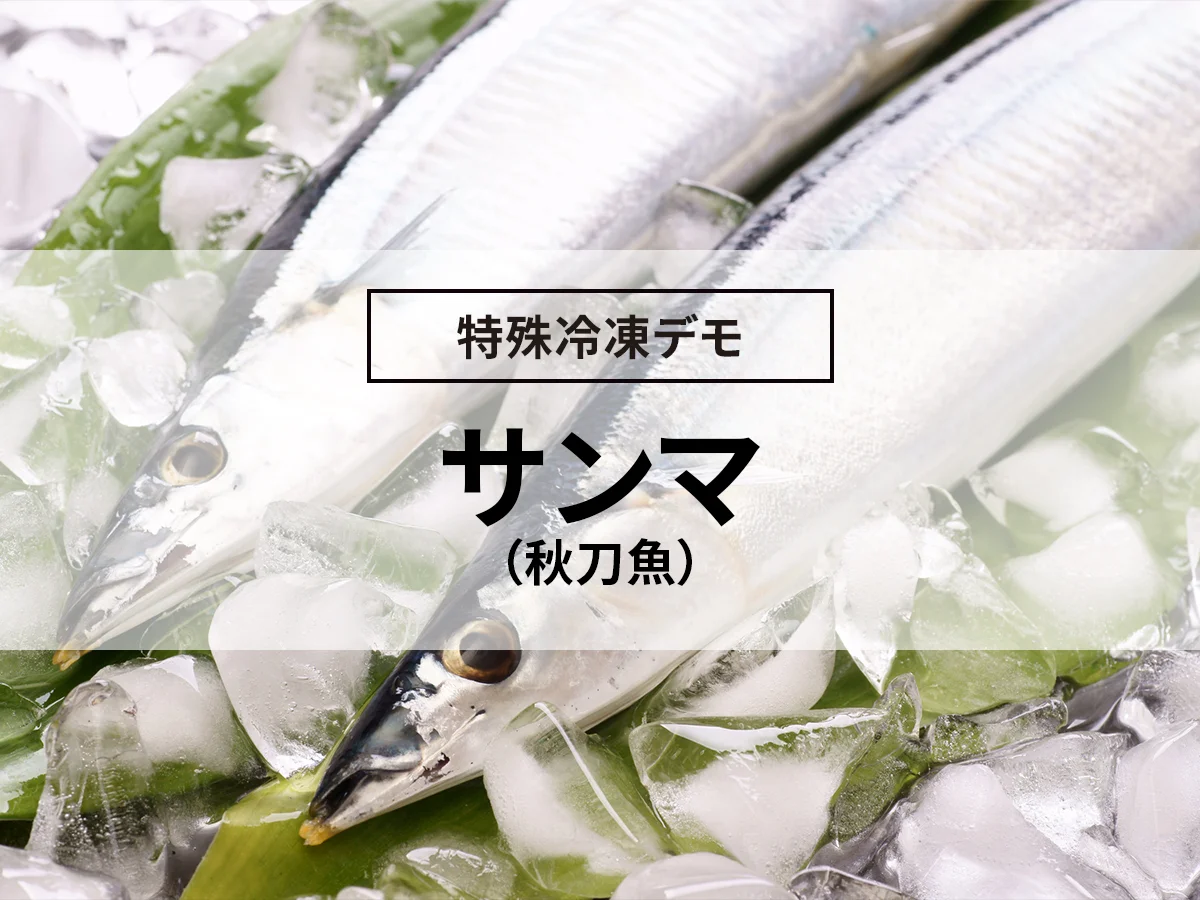
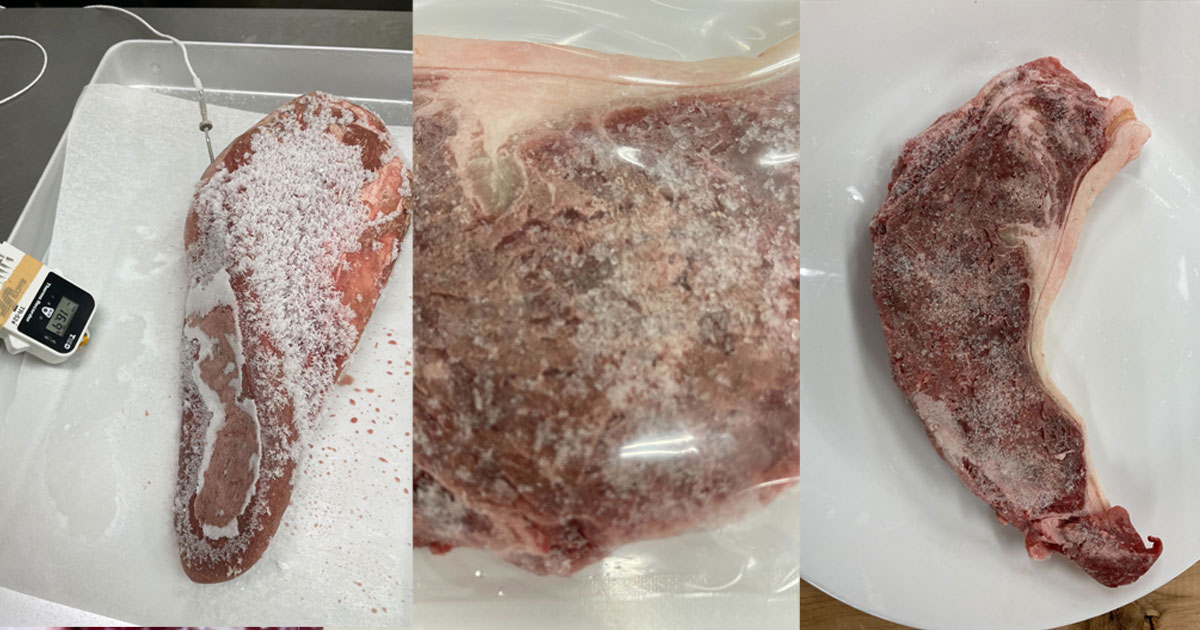
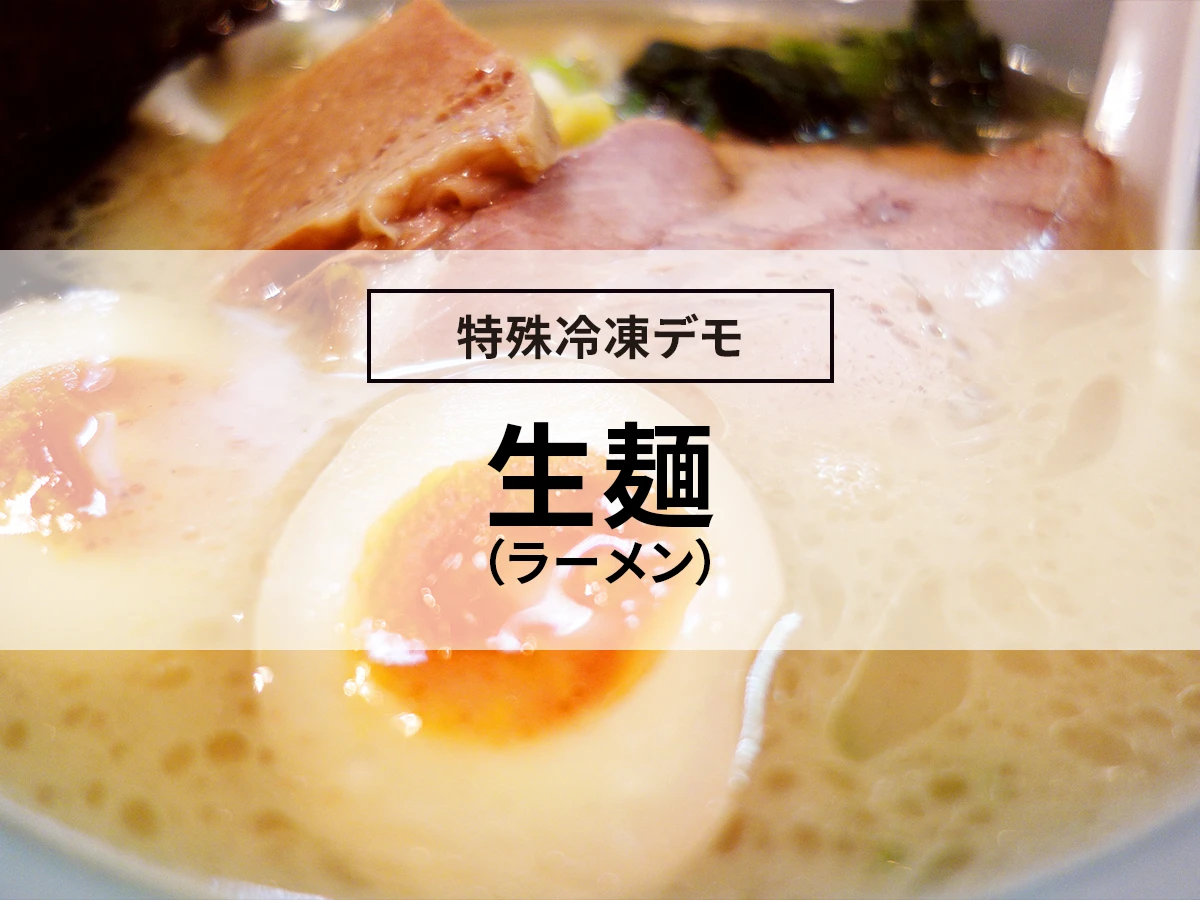
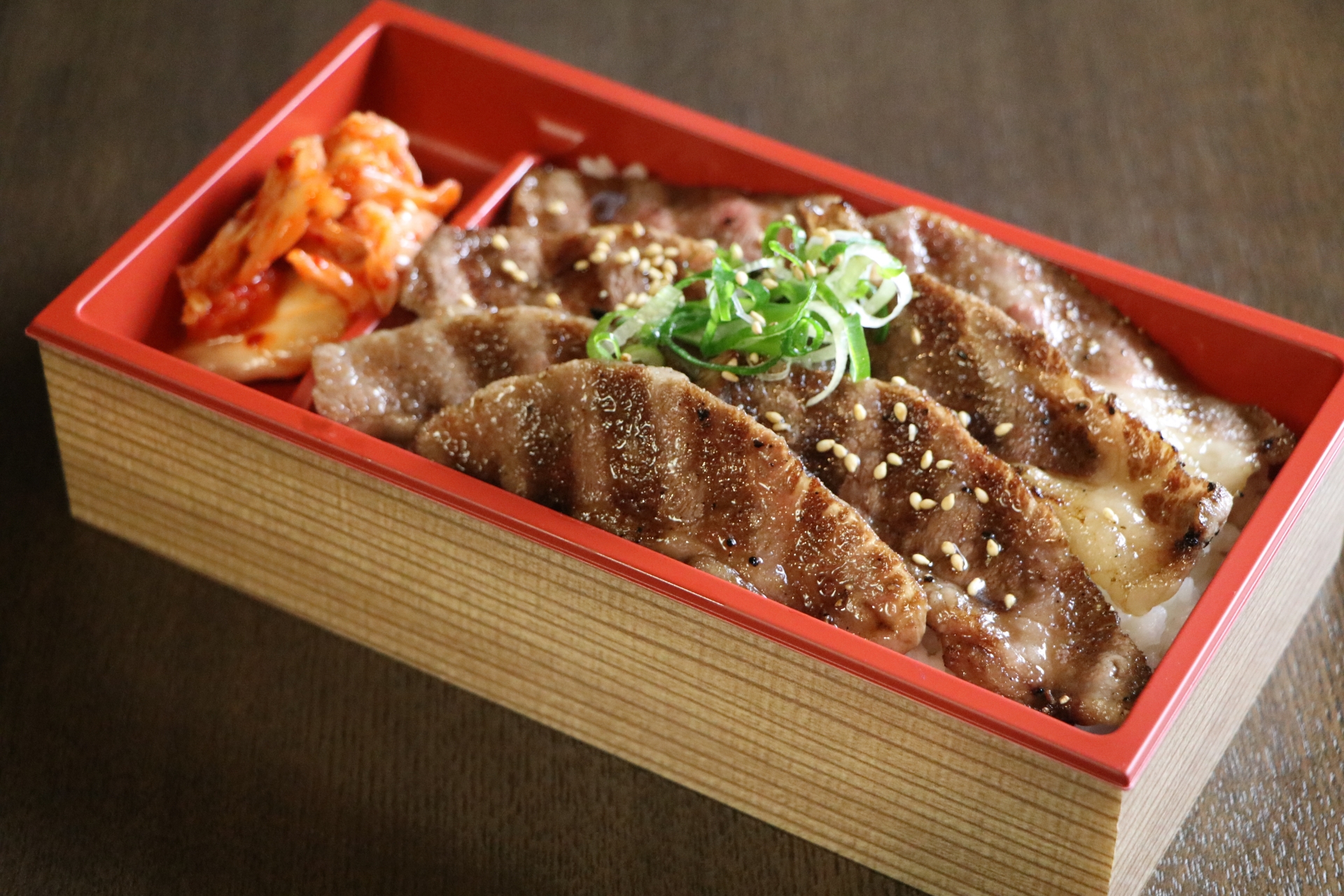
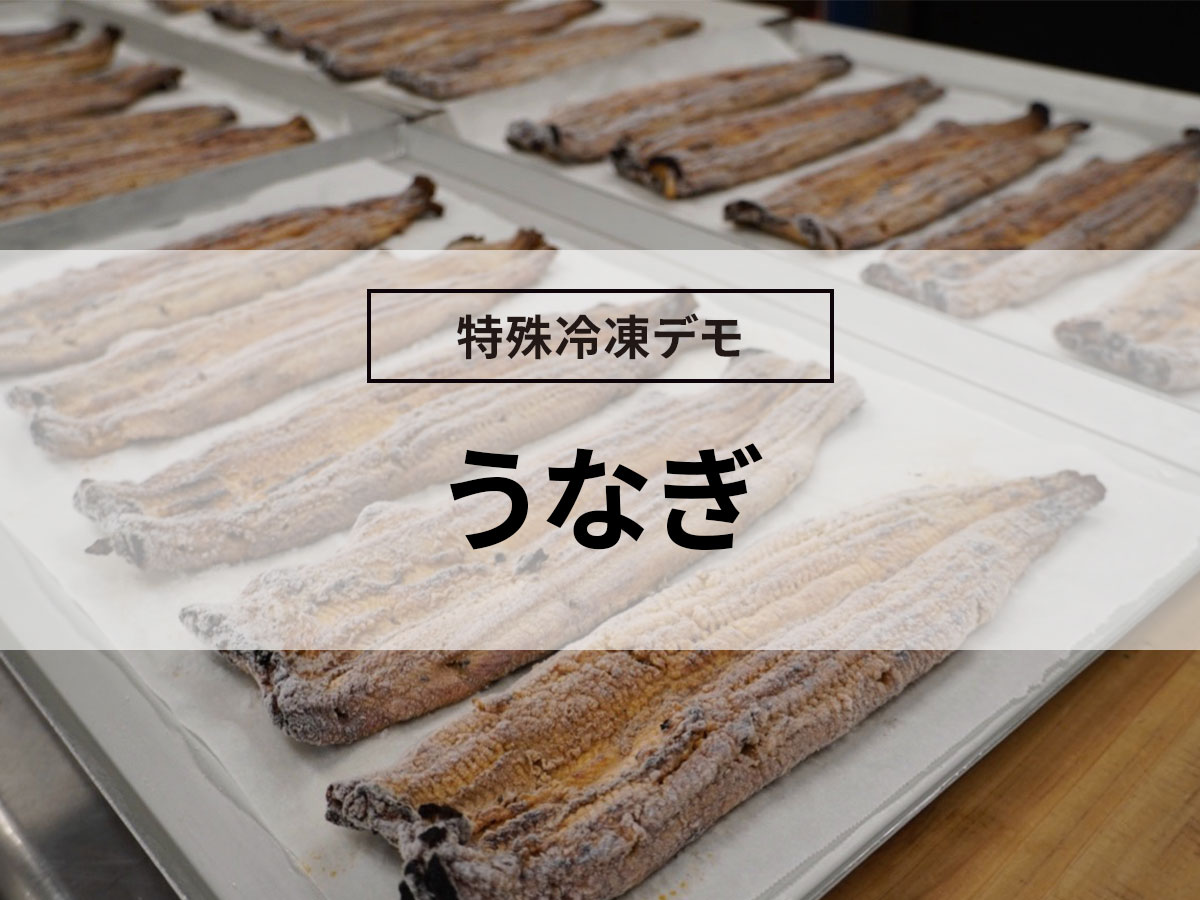
![[Freshly made raw soba all over the country! ] Example of introducing a quick freezer at a soba restaurant](https://shunkashutou.com/wp-content/uploads/2024/09/6d8138adcf26c410c11b25d5b8d2f3de.webp)

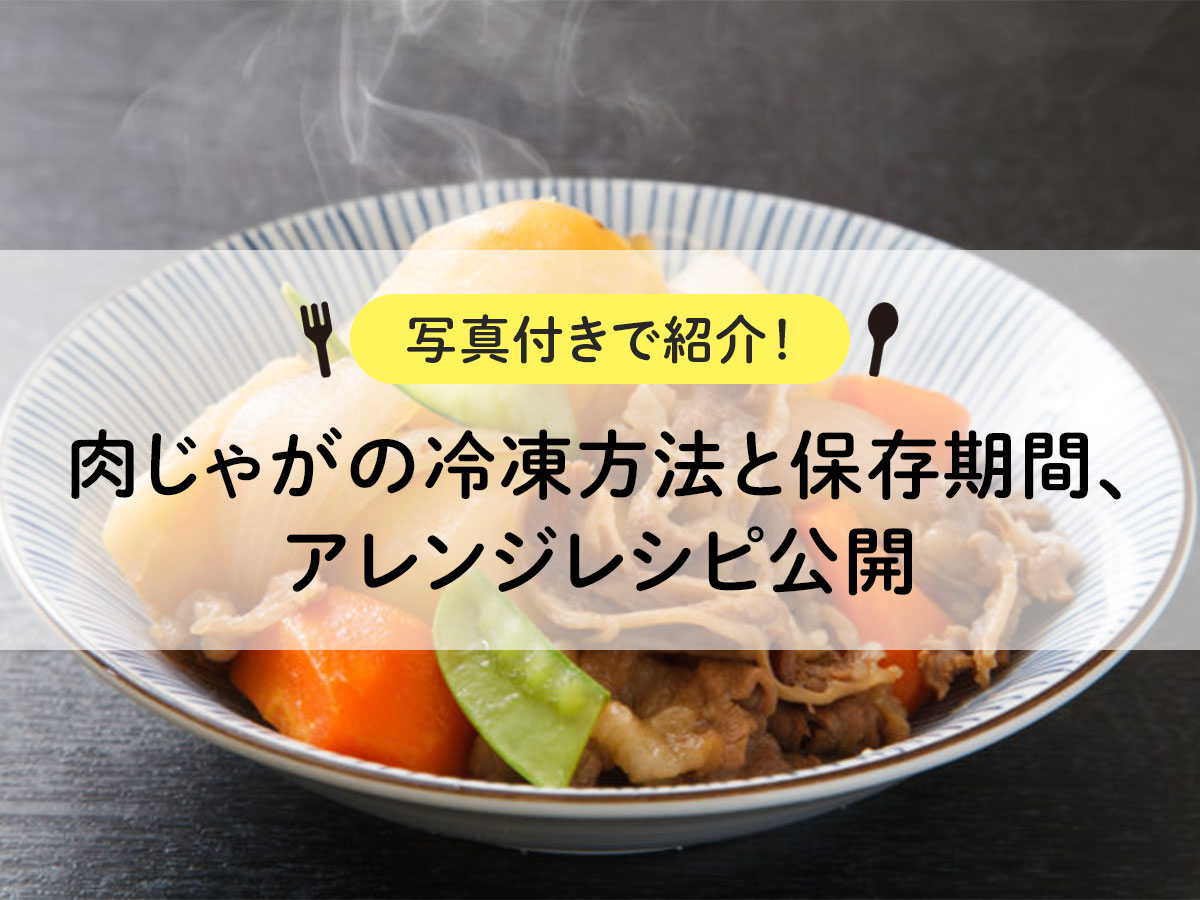
![How to freeze celery, nutrition, and 5 recipes! [Explanation with photos! ]](https://shunkashutou.com/wp-content/uploads/2023/09/serori-768x512-1.jpg)
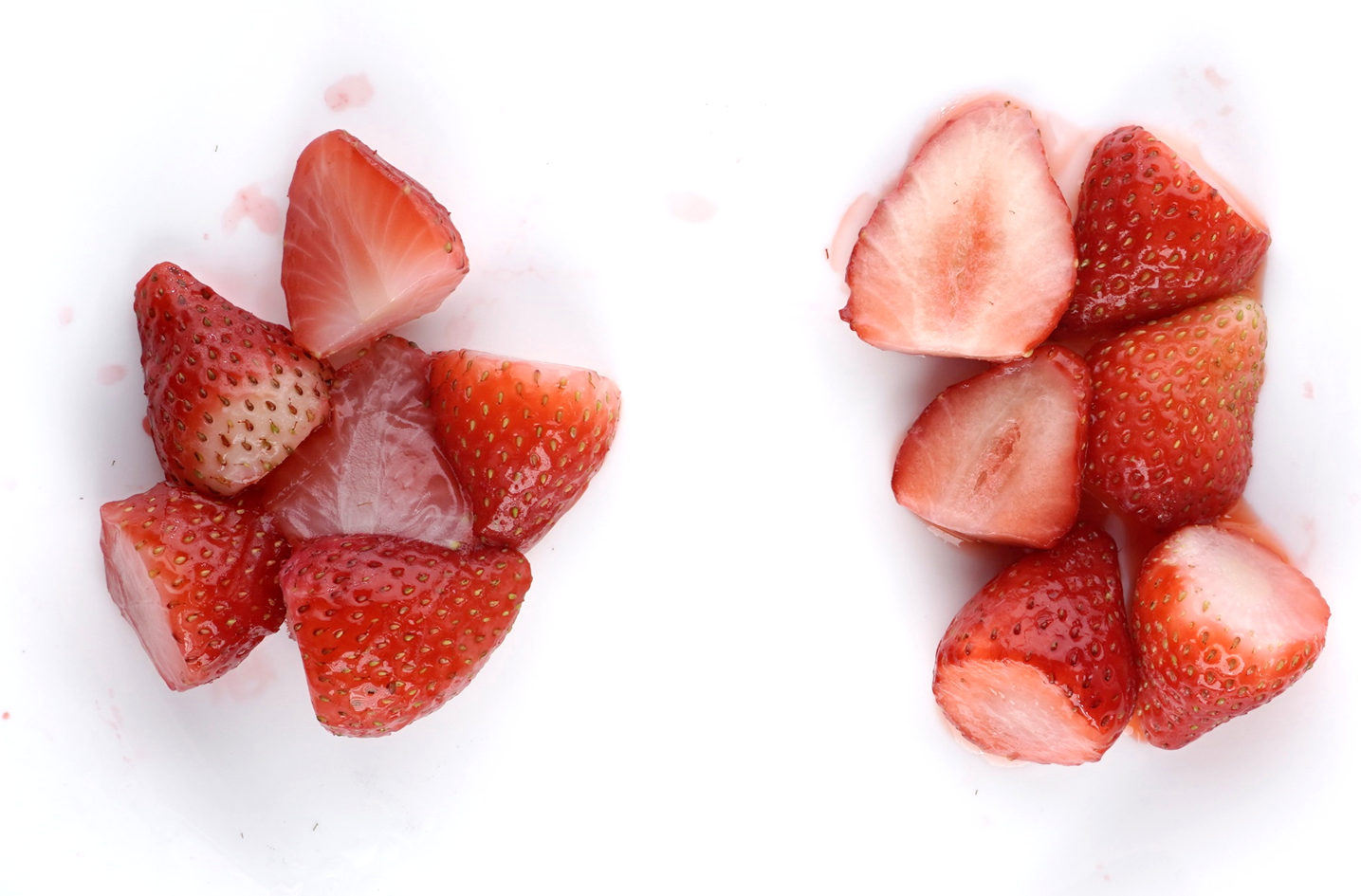
![How to freeze tomatoes, storage period, and 5 recipes! [Explanation with photos! ]](https://shunkashutou.com/wp-content/uploads/2023/10/tomato-768x513-1.jpg)
![Introducing the method and recipe for freezing eringi mushrooms [Explanation with photos! ]](https://shunkashutou.com/wp-content/uploads/2023/08/a360f0e10b69512c896510215ae51a7f.jpg)
![Introducing how to freeze ginger and recipes [Explanation with photos]](https://shunkashutou.com/wp-content/uploads/2023/09/myoga4-624x432-1.jpg)
![Introducing how to freeze and thaw whitebait, as well as recipes for its use [Full of nutrition! ]](https://shunkashutou.com/wp-content/uploads/2023/10/04d15012ec36f91a5574f63dfa9d4771.jpg)
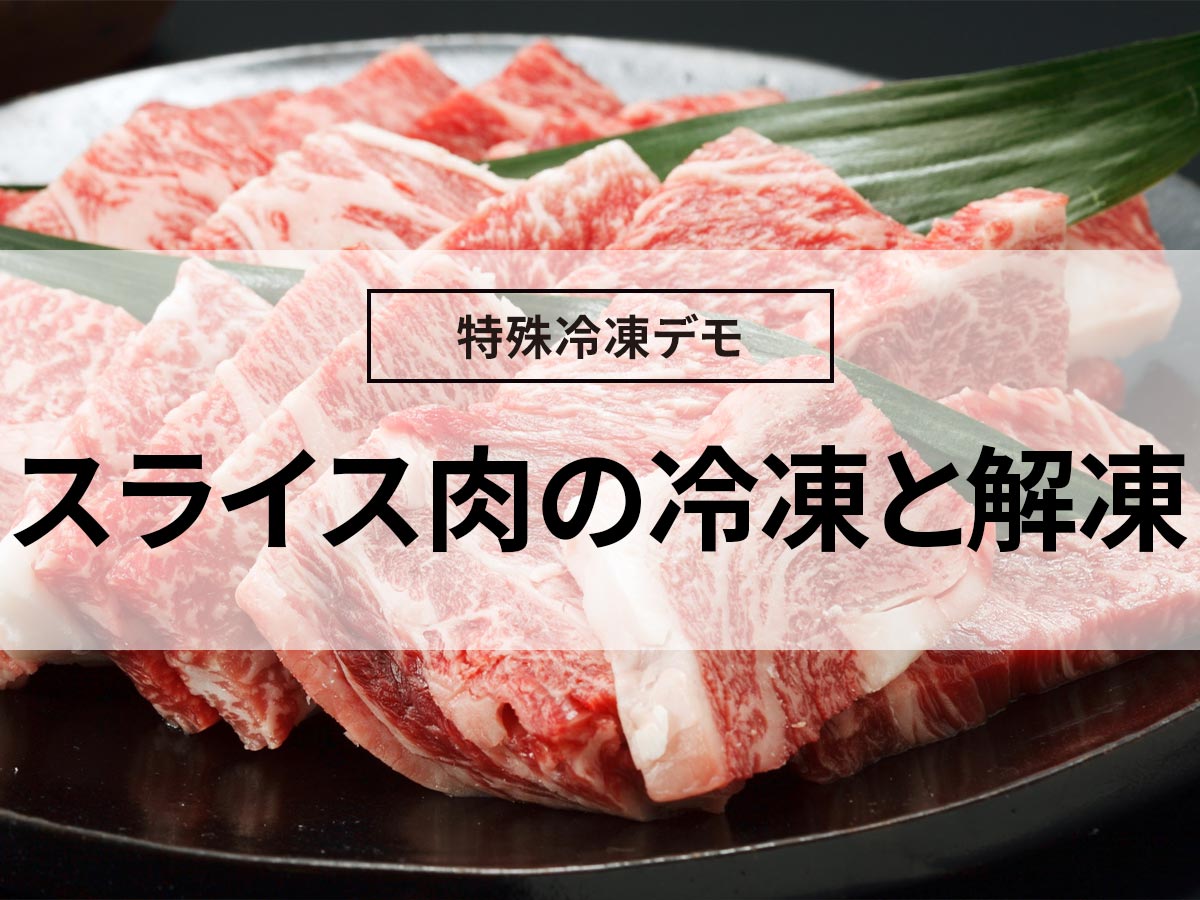
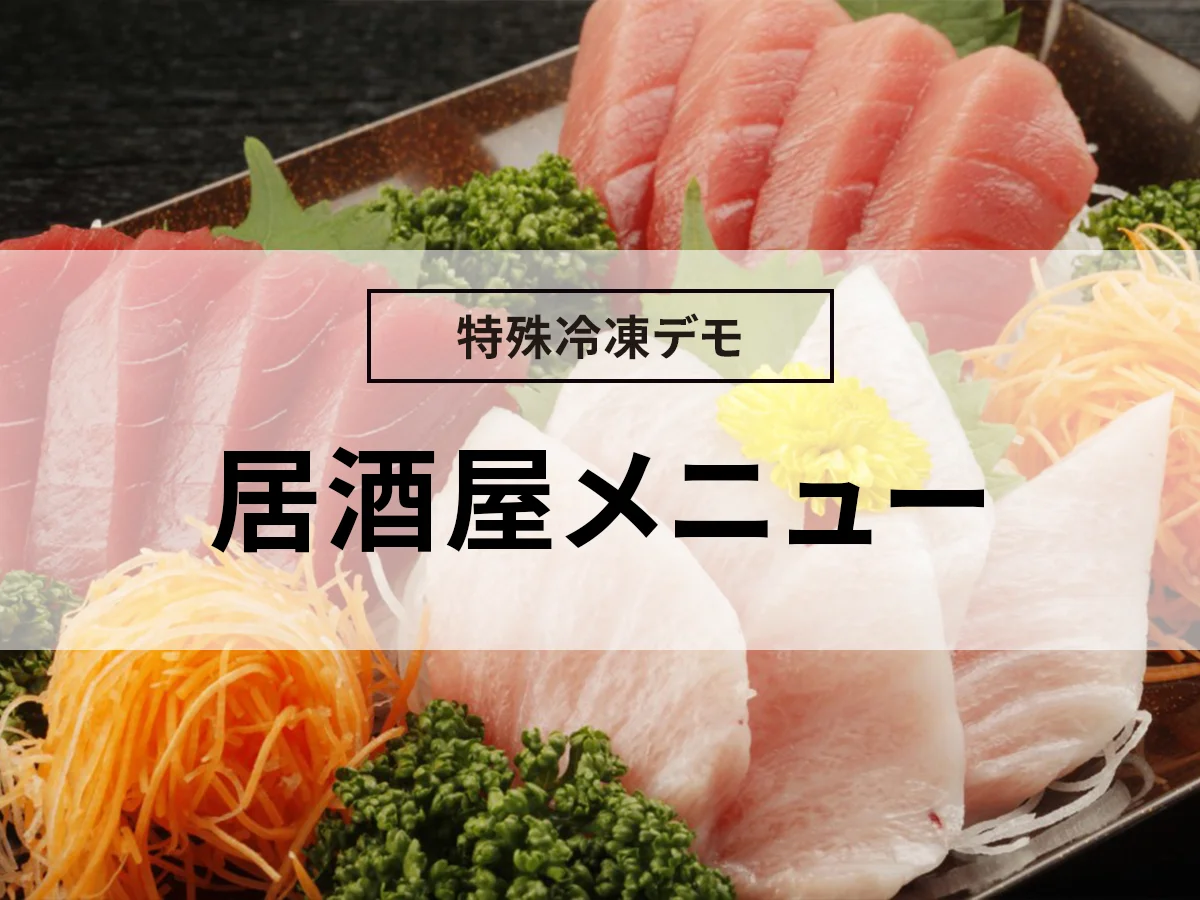
![[Includes grilling instructions] How to freeze hamburger steak, storage period, and carefully selected recipes!](https://shunkashutou.com/wp-content/uploads/2023/09/eb3a531f7fd023f973240f698c092b64.jpg)
![[Osechi remake dishes too! ] Introducing the method and recipe for freezing black beans](https://shunkashutou.com/wp-content/uploads/2023/09/9bcd5b0667eef32b7c7daf786e01172f.jpg)
![[Secret Technique] Introducing the freezing preservation and remake recipe of Kinpira Burdock!](https://shunkashutou.com/wp-content/uploads/2023/09/4c4b704274331befeed83cc4493acb75-1.jpg)
![[Explanation of how to fry! ] How to freeze and thaw pork cutlet, remake recipe!](https://shunkashutou.com/wp-content/uploads/2023/10/0a4143ad8ea0cc6bb6fdab8c74fab407.jpg)
![[Explanation with photos] How to freeze meat sauce, storage period, and 5 recipes!](https://shunkashutou.com/wp-content/uploads/2023/09/efa7161a08e57ef763d9e19623c7669c.jpg)
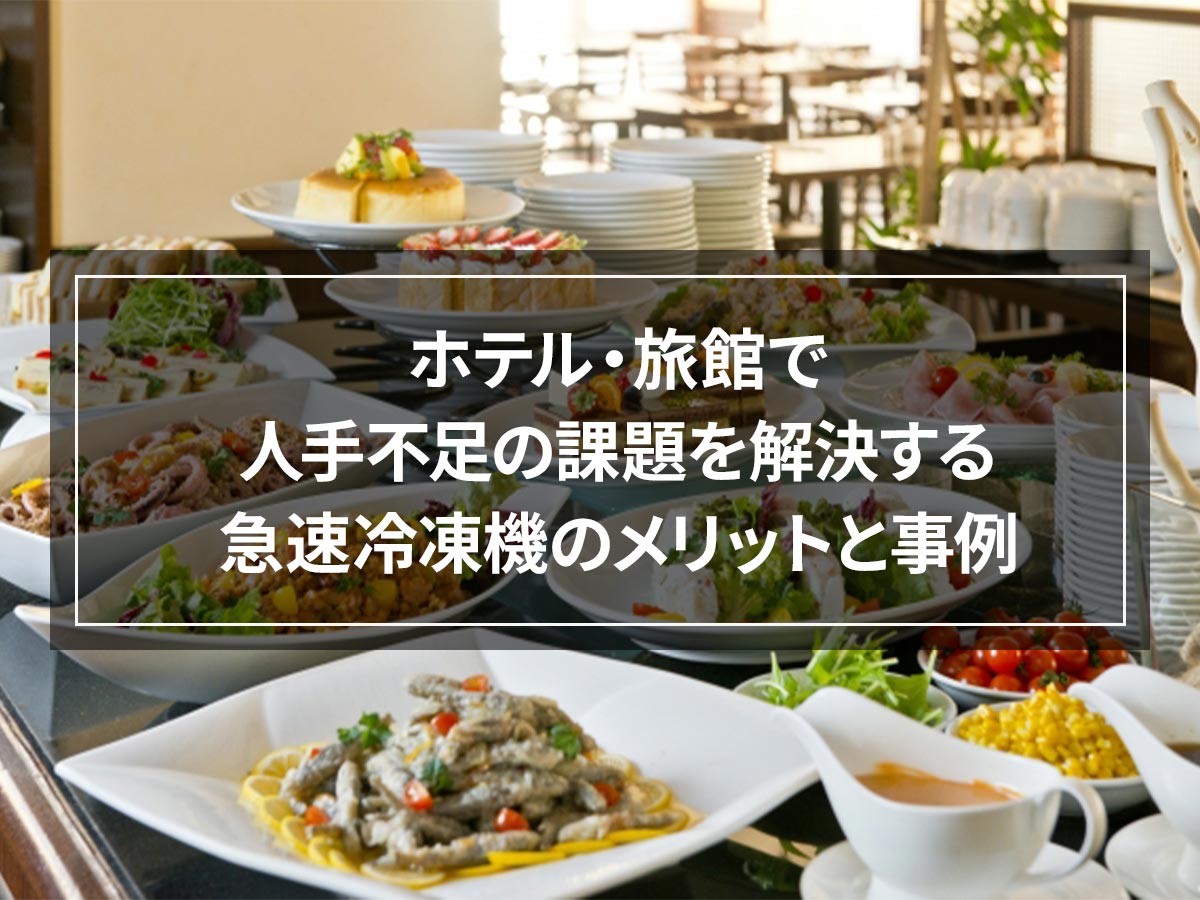
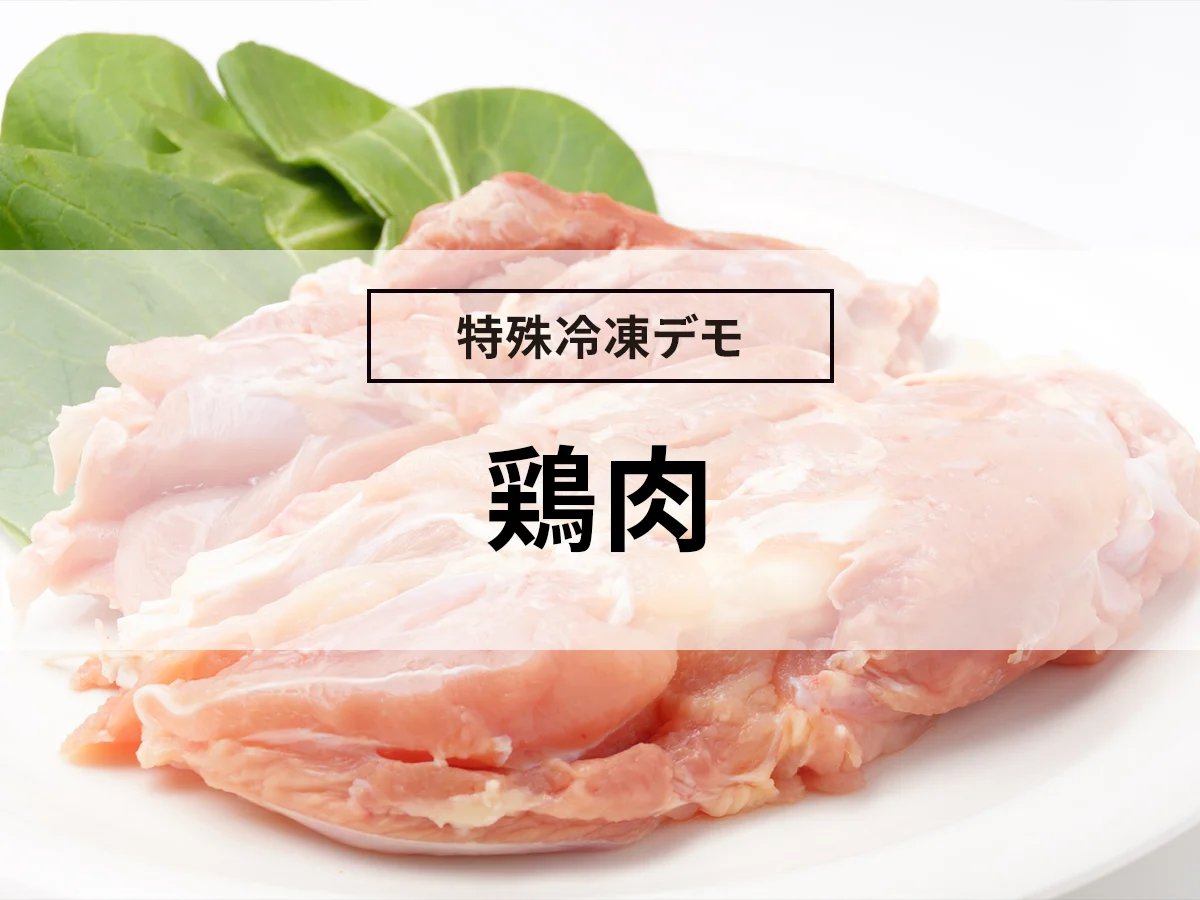

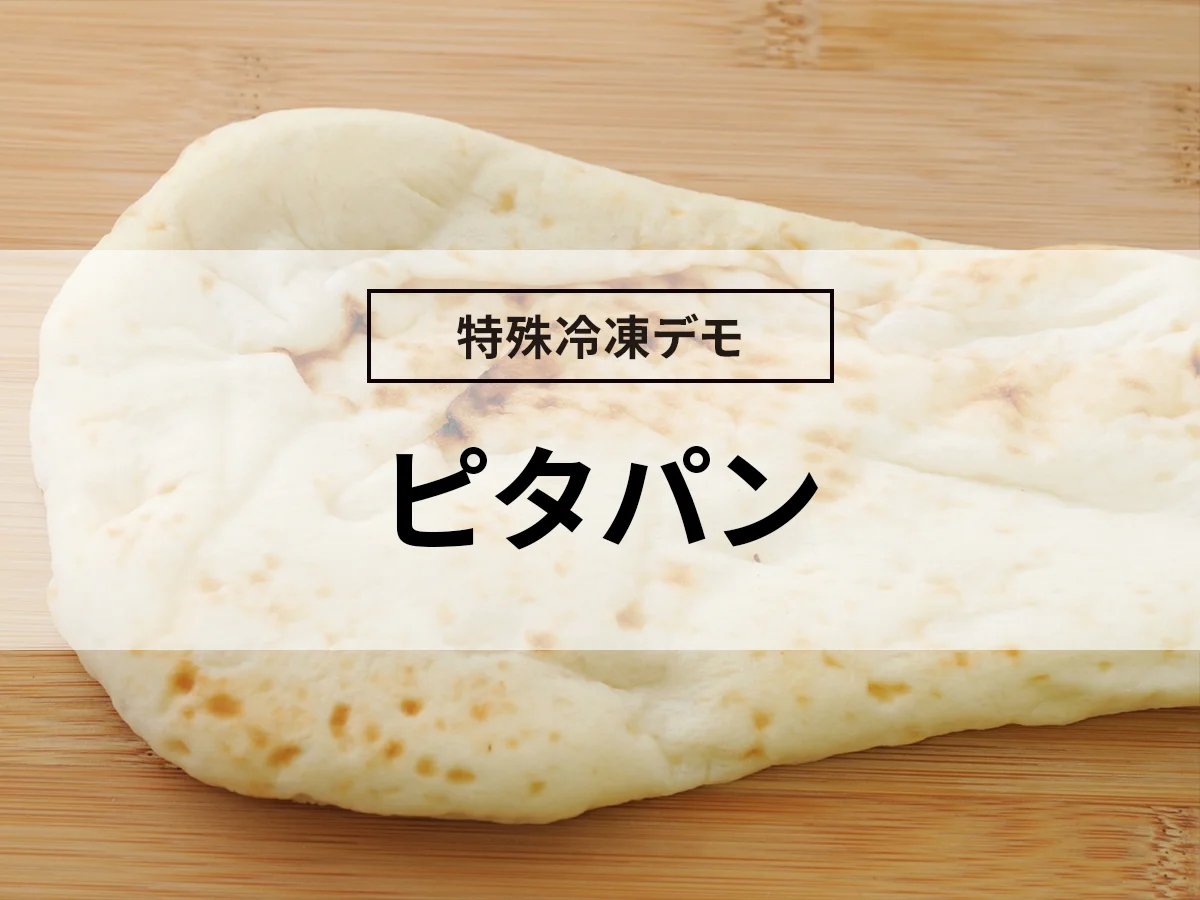
![[Rapid freezers in 2021] Market Trends and Customer Success Stories](https://shunkashutou.com/wp-content/uploads/2020/12/7F9A9CB9-A494-4E6A-946E-079279C596E6.jpeg)
![[Includes recommendations by industry] Summary of types and benefits of small rapid freezer](https://shunkashutou.com/wp-content/uploads/2020/12/smallsize.jpg)
![[Tips for making egg rolls that can be frozen] Introducing freezing methods, storage periods, and recipes!](https://shunkashutou.com/wp-content/uploads/2023/10/tamagoyaki-768x512-1.jpg)
![[Thorough Guide to Preserving Sweets] Introducing the freezing method, storage period, and thawing method in detail!](https://shunkashutou.com/wp-content/uploads/2023/10/bffcbc0b6e79bb1af6e05b930e11e949.jpg)
![[Recommended for lunch boxes too! ] Introducing recipes and methods for freezing pasta!](https://shunkashutou.com/wp-content/uploads/2023/10/93f66b71b92cbe1085d41c4ed80d7726.jpg)
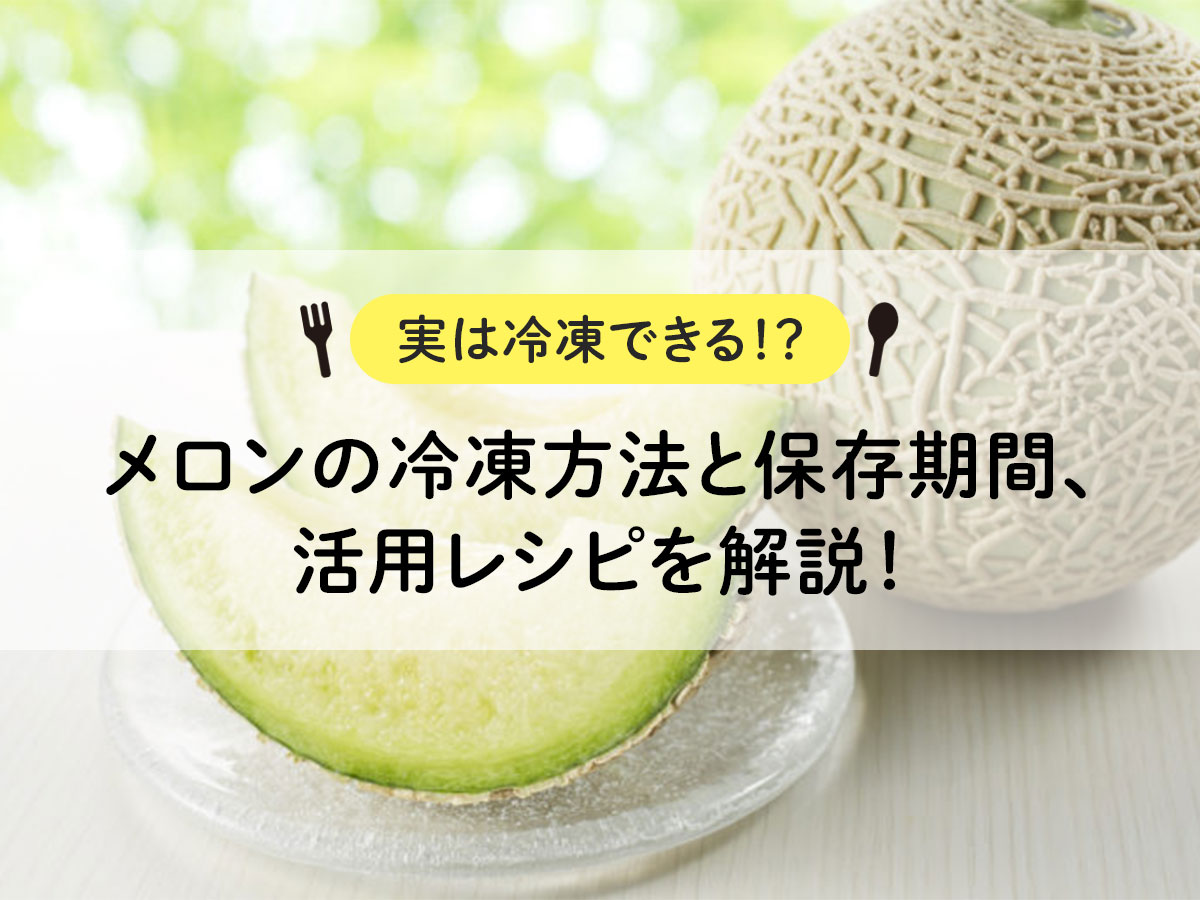
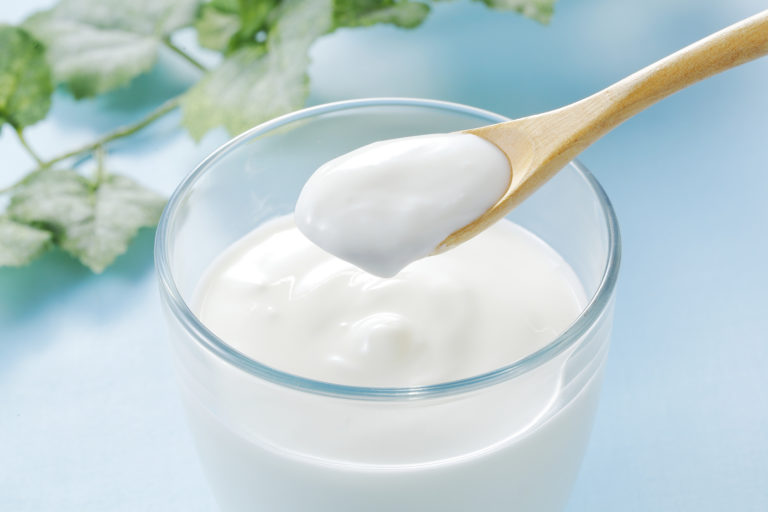
![[Need to know] 7 points to thaw frozen crab deliciously](https://shunkashutou.com/wp-content/uploads/2023/08/394440560c05fb5b512d75b81a3fae4f.jpg)




